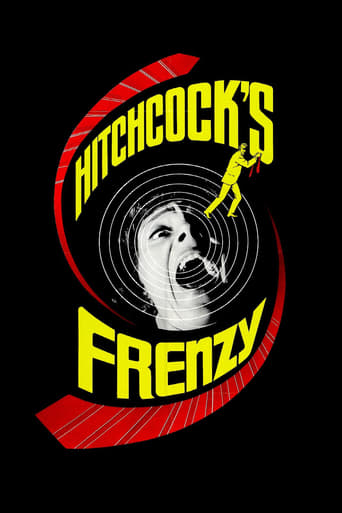
In 1972, the master filmmaker Alfred Hitchcock was over 70 years old when he directed his penultimate feature. Finally, in his later years, he was able to enjoy the new freedom from cinema censorship that came with the cinema renaissance of the 70’s. He could now use the lifting of restrictions on adult content and violence to make the Hitchcock film he always wanted to make. The serial killer movie, “Frenzy”, is the result and, with it, Hitch proved that he did not lose his touch.
The movie is set in a London being terrorized by a serial rapist-murderer nicknamed “The Necktie killer”, because he always strangled his victims with his necktie after raping them. The movie includes two of Hitchcock’s regular themes from his classics of the 40s and 50s. The theme of a normal looking killer lurking among us and the theme of an innocent man being accused of a terrible crime.
In addition, he borrows from his classic serial killer film, “Psycho”, by introducing us to the killer very early in the movie through a shockingly realistic depiction of one of his murders. Here, unlike “Psycho”, there is no shower curtain blocking our view. It is a scene of power, shown through the perspective of first its pitiful victim, and then the killer himself. In this scene, the rape is shown through the terrified and painful eyes of the victim, while the killer performs the act like a robot without emotions. The murder is then shown via a close-up of the victim’s face, eyes bulging out as the camera switches focus from her eyes, the necktie used to kill her, the killer’s sweaty grimacing face, and then back to the victim’s eyes at the moment of death. The scene is more shocking than any grisly death scene found in your typical slasher horror movie.
The main characters are a former RAF squadron leader, Richard Blaney (Jon Finch), and his fruit-seller friend, Bob Rusk (Barry Foster). There is also Blaney’s ex-wife Brenda (Barbara Leigh-Hunt), and Blaney’s current girlfriend Babs (Anna Massey). Investigating the murders is the police inspector Timothy Oxford (Alec McCowen) and it is his relationship with his quirky wife that adds humor to the proceedings.
There is quite a bit of humor found within the grisly tale, as Hitch likes to add odd people every now and then into the story. At one point, there is a doctor and a lawyer speaking about the serial killer in a pub while someone who may be the killer is standing nearby. Their conversation tries to explain in scientific terms the mindset of a sexual deviant killer. This and other scenes are Hitch’s way of emphasizing the morbid fascination seemingly well-respected people have with murder and sadism. In fact, most of the secondary characters in the movie are quite comedic in their depictions. From pub landlords, hotel porters and motorcycle cops with large mustaches, who approach grisly events with an almost stupefying morbid fascination that is quite humorous.
Hitchcock has been depicting depraved killers ever since his silent period. It is with this film that he can truly realize his vision. The movie makes a point of depicting grotesque realistic visions of corpses who met their fate through violence. One victim is shown pale white, eyes bulging and with her tongue sticking out. Another scene has the killer returning to the body of his victim to remove an incriminating object that demands that he break the dead girl’s fingers in order to retrieve it. These scenes give the movie a horror-thriller effect and are quite effective.
As in all of Hitchcock’s movies, and especially his better ones, “Frenzy”, is chock full of stunning visuals. From the disturbing firsthand look at a murder mentioned above, to the famous reverse shot of the camera descending the apartment building stairs from the apartment door, while the killer is murdering another victim in the flat. This scene, while not actually showing the murder, is as chilling as anything Hitchcock has ever done. Because he showed us the first murder in such graphic detail, I knew what was happening in the flat to the poor victim, while the camera slowly moved down the stairs backwards, out the building’s door, into the bustling street and ending with an establishing shot of the flat. It is the shocking previous scene of the first murder that makes this scene so scary.
Alfred Hitchcock was known as the master of suspense, which he was. With “Frenzy”, he also proved that he was just as masterful in shock and horror as he was in suspense. “Frenzy” is easily his most shocking film. It is also one of his best.

